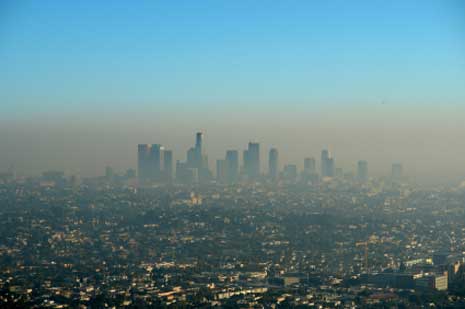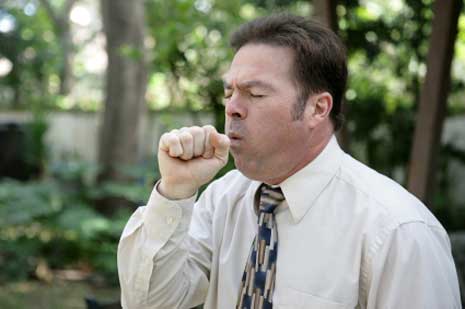
Plumes of harmful air pollutants can be transported across oceans and continents — from Asia to the United States and from the United States to Europe — and have a negative impact on air quality far from their original sources, says a new report by the National Research Council. Although degraded air quality is nearly always dominated by local emissions, the influence of non-domestic pollution sources may grow as emissions from developing countries increase and become relatively more important as a result of tightening environmental protection standards in industrialized countries.
“Air pollution does not recognize national borders; the atmosphere connects distant regions of our planet,” said Charles Kolb, chair of the committee that wrote the report and president and chief executive officer of Aerodyne Research Inc. “Emissions within any one country can affect human and ecosystem health in countries far downwind. While it is difficult to quantify these influences, in some cases the impacts are significant from regulatory and public health perspectives.”
The report examines four types of air pollutants: ozone; particulate matter such as dust, sulfates, or soot; mercury; and persistent organic pollutants such as DDT. The committee found evidence, including satellite observations, that these four types of pollutants can be transported aloft across the Northern Hemisphere, delivering significant concentrations to downwind continents. Ultimately, most pollutants’ impacts depend on how they filter down to the surface.
Current limitations in modeling and observational capabilities make it difficult to determine how global sources of pollution affect air quality and ecosystems in downwind locations and distinguish the domestic and foreign components of observed pollutants. Yet, some pollutant plumes observed in the U.S. can be attributed unambiguously to sources in Asia based on meteorological and chemical analyses, the committee said. For example, one study found that a polluted airmass detected at Mt. Bachelor Observatory in central Oregon took approximately eight days to travel from East Asia.
The health impacts of long-range transport vary by pollutant. For ozone and particulate matter — which cause respiratory problems and other health effects — the main concern is direct inhalation. While the amount of ozone and particulate matter transported on international scales is generally quite small compared with domestic sources, neither of these pollutants has a known “threshold,” or concentration below which exposure poses no risk for health impacts. Therefore, even small incremental increases in atmospheric concentrations can have negative impacts, the committee said. For instance, modeling studies have estimated that about 500 premature cardiopulmonary deaths could be avoided annually in North America by reducing ozone precursor emissions by 20 percent in the other major industrial regions of the Northern Hemisphere.
For mercury and persistent organic pollutants, the main health concern is that their transport and deposition leads to gradual accumulation on land and in watersheds, creating an increase in human exposure via the food chain. For example, people may consume mercury by eating fish. There is also concern about eventual re-release of “legacy” emissions that have been stored in soils, forests, snowpacks, and other environmental reservoirs.
In addition, the committee said that projected climate change will lead to a warmer climate and shifts in atmospheric circulation, likely affecting the patterns of emission, transport, transformation, and deposition for all types of pollution. However, predicting the net impacts of the potential changes is extremely difficult with present knowledge.
In the coming decades, man-made emissions are expected to rise in East Asia, the report says. These increases could potentially be mitigated by increasingly stringent pollution control efforts and international cooperation in developing and deploying pollution control technology.
To enhance understanding of long-range transport of pollution and its impacts, the committee recommended a variety of research initiatives, such as advancing “fingerprinting” techniques to better identify source-specific pollutant characteristics, and examining how emissions from ships and aircraft affect atmospheric composition and complicate the detection of pollution from land-based sources. The committee emphasized developing an integrated “pollution source-attribution” system that improves capabilities in emissions measurements and estimates; atmospheric chemical and meteorological modeling; long-term, ground-based observations; satellite remote sensing; and process-focused field studies.
Moreover, the committee stressed that the United States, as both a source and receptor of long-range pollution, has an interest in remaining actively engaged in air pollutants that travel abroad, including support of more extensive international cooperation in research, assessment, and emissions control efforts.
The report was sponsored by the U.S. Environmental Protection Agency, National Oceanic and Atmospheric Administration, NASA, and National Science Foundation. The National Academy of Sciences, National Academy of Engineering, Institute of Medicine, and National Research Council make up the National Academies. They are independent, nonprofit institutions that provide science, technology, and health policy advice under an 1863 congressional charter. Committee members, who serve pro bono as volunteers, are chosen by the Academies for each study based on their expertise and experience and must satisfy the Academies’ conflict-of-interest standards. The resulting consensus reports undergo external peer review before completion. For more information, visit National Academies A committee roster follows.
Reference: National Academy of Sciences, Air Pollutants From Abroad a Growing Concern, Says New Report, Washington, September 29. 2009





